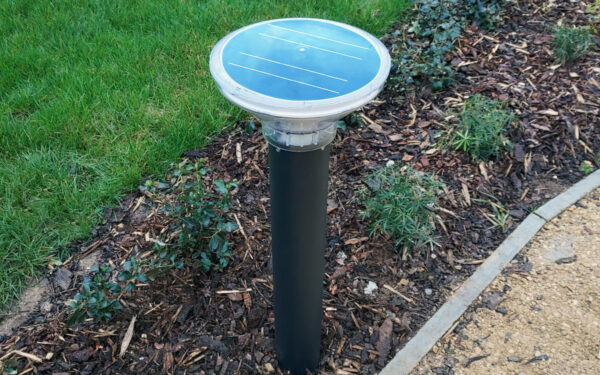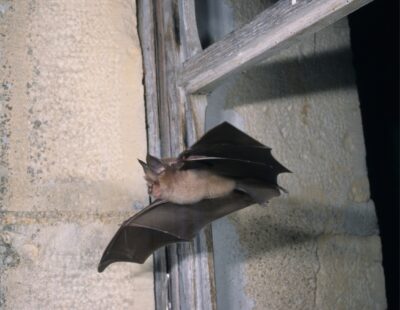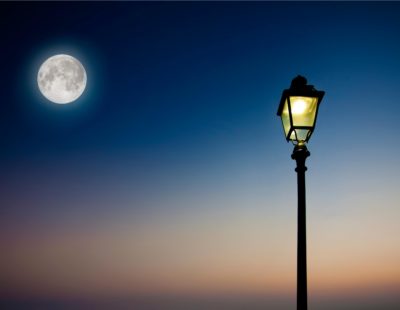The effect of solar lights on the ecosystem and environment
Solar lights are a great addition to any garden area, path, or outdoor project, but it’s important to think about the impact that they have on the local ecosystem. Many species of insects are affected by light sources and similarly, wildlife can be affected to.
The effect solar lights have on insects can also have knock-on effects for their predators. Artificial lights are generally disruptive and their effect on bugs can affect animals and birds which has a wider impact on the ecosystem. Some solar lights help to curb this effect though and limit the effect on wildlife which in turn reduces the effect on the environment.
How are insects affected by light?
In order to understand how solar lights affect bugs, we’ll discuss how light generally affects them and why they might be attracted to solar lights.
If you’ve spent time outside during a summers evening, you have probably seen insects flying around sources of light. Some insects, such as moths, seem to be naturally drawn to and even mesmerized by light, occasionally even colliding head on with them. Although scientists have not been able to figure out exactly why bugs do this, they have come up with a few theories which might help explain it.
One of the most popular theories is that bugs use the moon for navigation. Because the moon is so far away, insects can move around freely, keeping the moon in the same relative position, like how sailors used to rely on the stars to guide their ships. However, if an insect mistakes an artificial light for the moon, they become disorientated because the relative position of that light keeps changing as they move around it.
Another important factor is wavelength, insects can only see a specific range of wavelengths, and these are shorter like ultraviolet light or ‘cooler’ colours of light, such as moonlight. This means that ‘warmer’ lights (correlated colour temperatures below 3300K) have less of an impact on bugs.
How are insects affected by warmth?
Although some bugs are attracted to light, some insects are just drawn in by the warmth. This is because not all insects are able to produce enough warmth through movement, so these particular insects search for external sources of heat to supplement their body temperature.
Some insects also hunt their food using heat (infrared) as an indicator with the most notorious one being mosquitos.
Which insects are affected by solar lights?
As we’ve already mentioned, mosquitos can be affected by outdoor lights, but other insects can also be affected. Here’s a list of insects most commonly affected:
- – Moths
- – Flies
- – Bees/wasps
- – Mosquitoes
- – Butterflies
- – Beetles
- – Glow worms
For more information on how these insects are affected see this Royal Horticulture Society blog.
Which animals and other wildlife are also affected by solar lights?
Animals, birds, and amphibians generally try to avoid solar lighting. It can have a big impact on different aspects of their lives and can even affect breeding or feeding patterns.
Although nocturnal animals and wildlife are also directly affected by outdoor lighting, some of them benefit from it for hunting purposes. Some animals like hedgehogs and bats are negatively impacted as this excess light can disturb their hibernation schedule.
Other animals impacted by outdoor solar lighting are:
- – Birds, especially owls
- – Frogs
- – Foxes
Larger animals like deer are typically unaffected solar lights.
Learn how you can make your outdoor lighting bat friendly >
How to make sure your solar lights are not negatively impacting wildlife
In order to avoid negatively impacting bugs and wildlife, there’s a few things you can do to manage your solar lighting responsibly. Generally, as long as you’re not trying to light up your whole garden with solar lights, they won’t have too much of an impact but here’s some tips for responsible use of solar lights:
- – Consult with local wildlife organisations to place the lighting away from areas popular with wildlife.
- – Add a hood or cowl to the lights to minimise upward light spillage.
- – Choose warmer coloured lights.
- – Think carefully about how much light you need.
- – When/where do you need the light?
- – Make use of motion sensors and timers
- – VLR, which stands for Variable Lighting Regimes, allows for artificial lights to be either dimmed or switched off at various periods (for example, at times when bats are known to leave their roosts), motion sensors can also help minimise the use of the lights to only times where they are needed.
With careful planning and consideration for the local environment and planning businesses organisations can minimise the impact of solar lighting on the local wildlife.
You can also buy dark sky friendly solar lights like our Solareye80 Bat Hat which is specifically designed to reduce upward light spillage by 98%. Check out our website to see a video comparison of the Solareye80 and the Solareye80 bat hat.
Environmental solar lighting with Solareye
Here at Solareye, we’re passionate about helping businesses and local authorities create safe, comfortable, and enjoyable outdoor spaces. We also understand the importance of minimising the adverse effects of artificial lighting on the ecosystem and the environment.
That’s why our products waymark your pathway but are also designed to reduce the amount of light spillage. We even designed a product specifically for safeguarding insects and wildlife.
Solareye Bat Hat is designed to reduce upward light spillage by 98% while maintaining the same profile and night-time visibility for cyclists and pedestrians as the original Solareye80 ground light. By decreasing upwards light spillage, light trespass is reduced and the negative effects of light pollution on bats and other nocturnal animals is minimised.
We also offer a warm white colour option (2700K) in line with the latest guidance due to be announced imminently by the Institution of Lighting Professionals in collaboration with The Bat Conservation Trust. Guidance Note GN 08 23 suggests local authorities should be specifying lighting with a maximum of 2,700K for bat-sensitive projects.
Speak to a member of the team today to learn more about our environmentally friendly solar lighting solutions.





